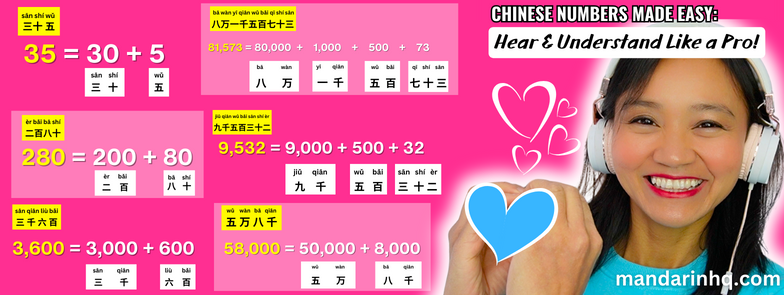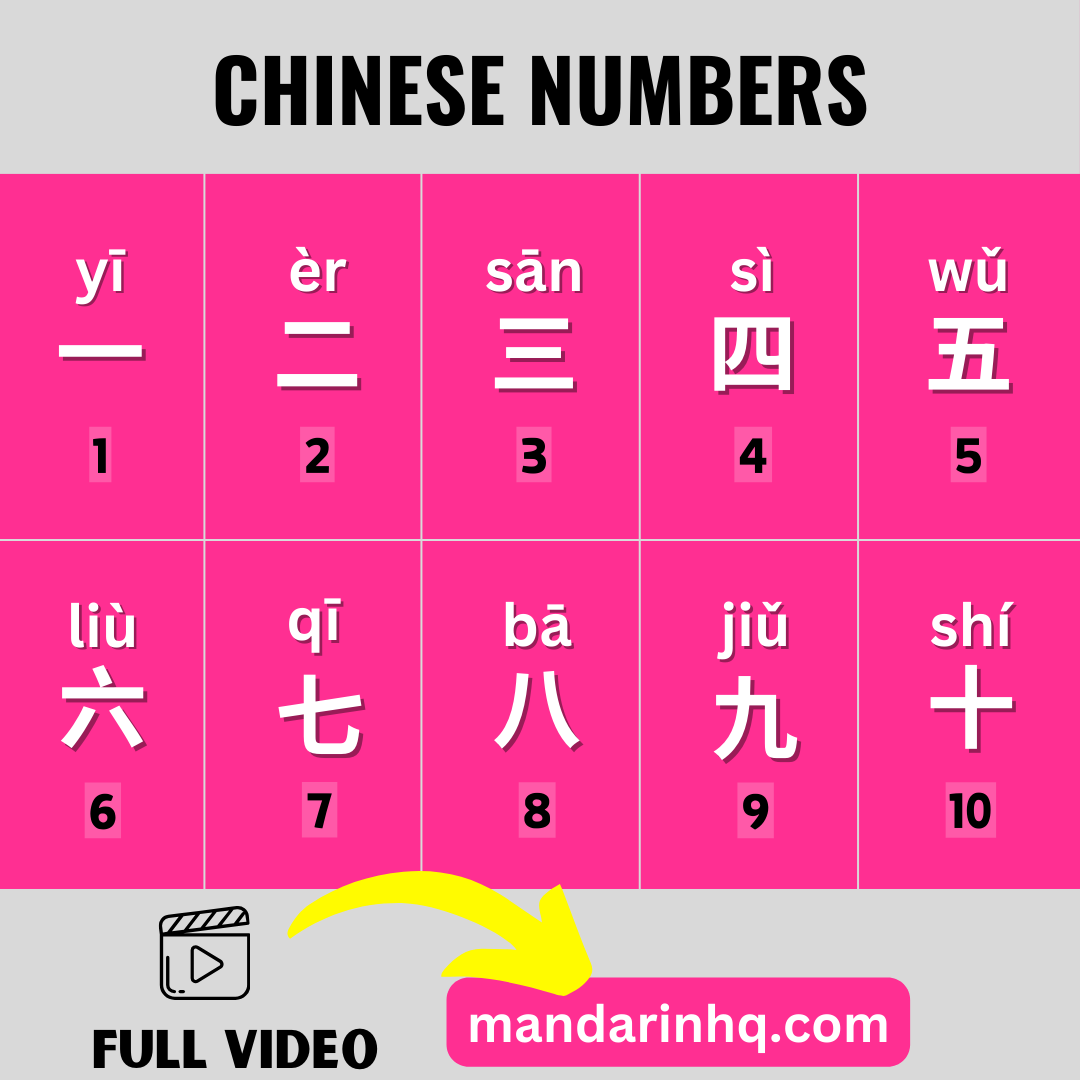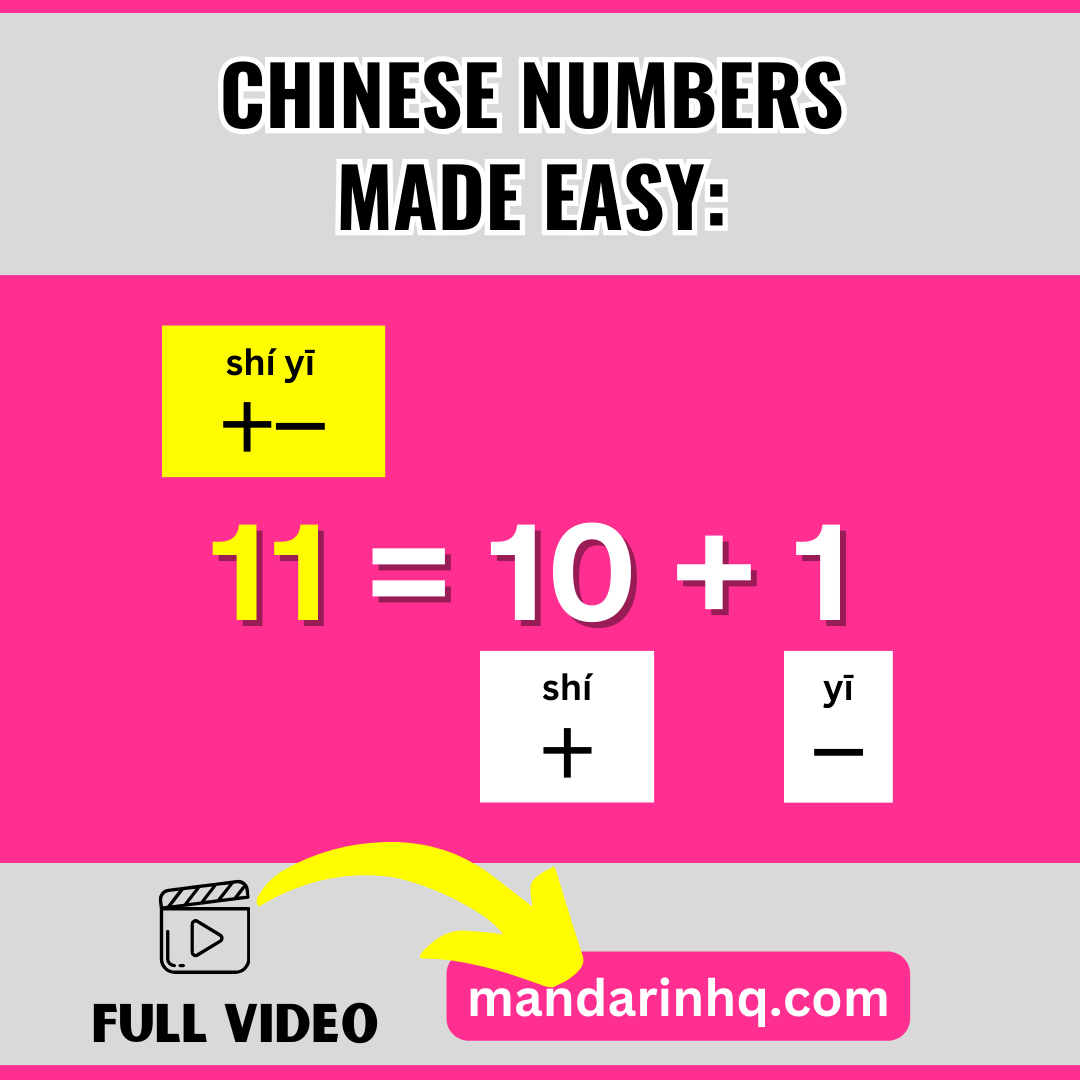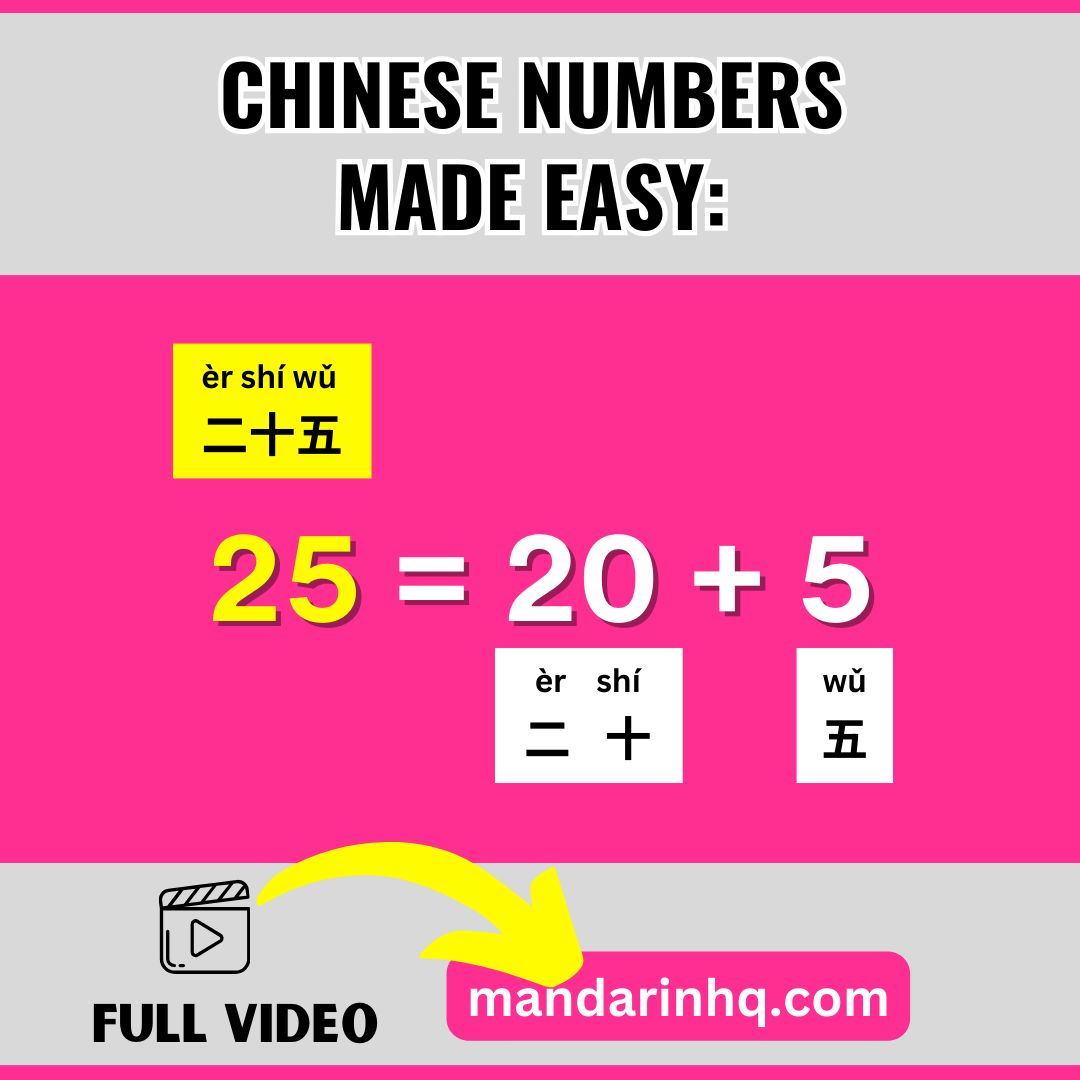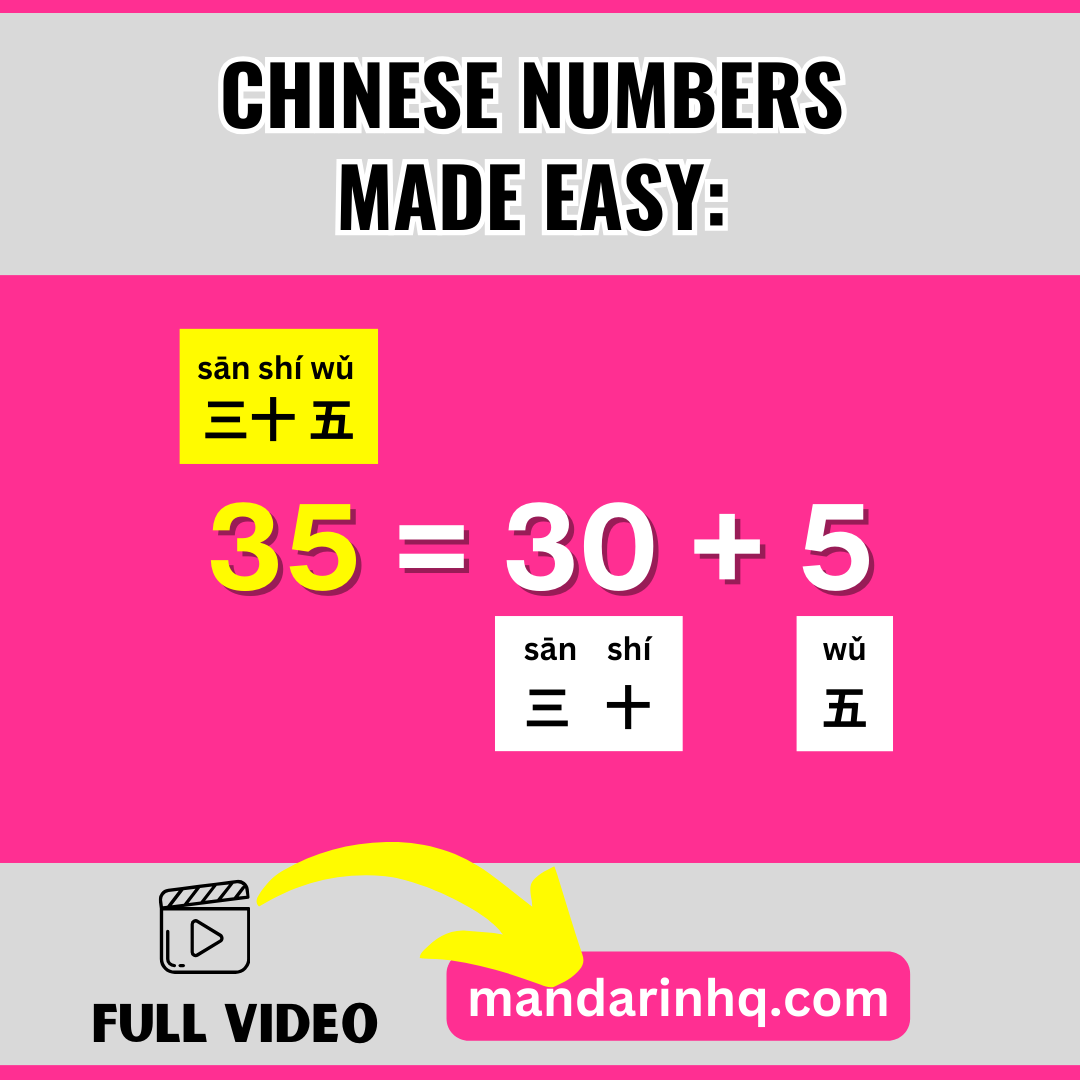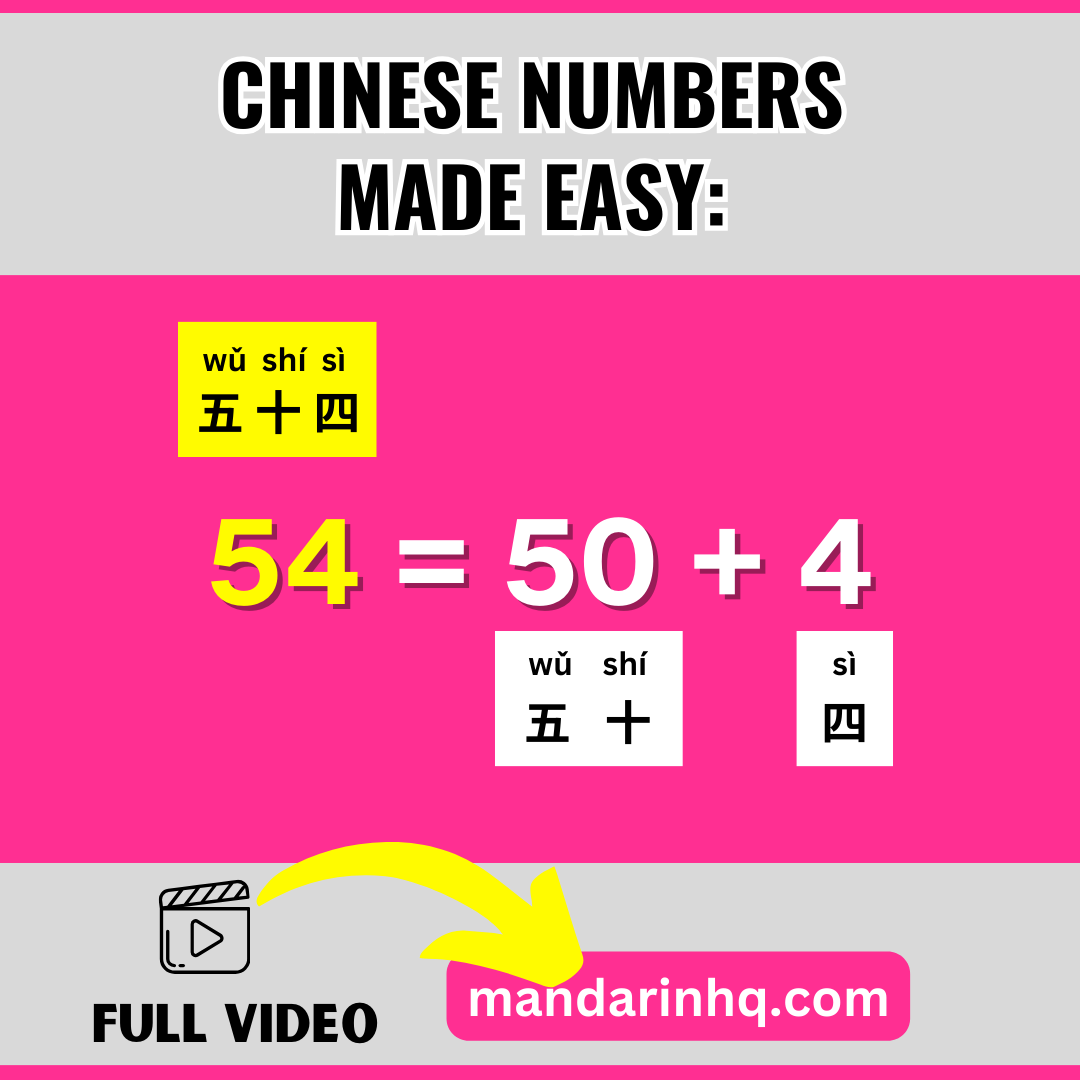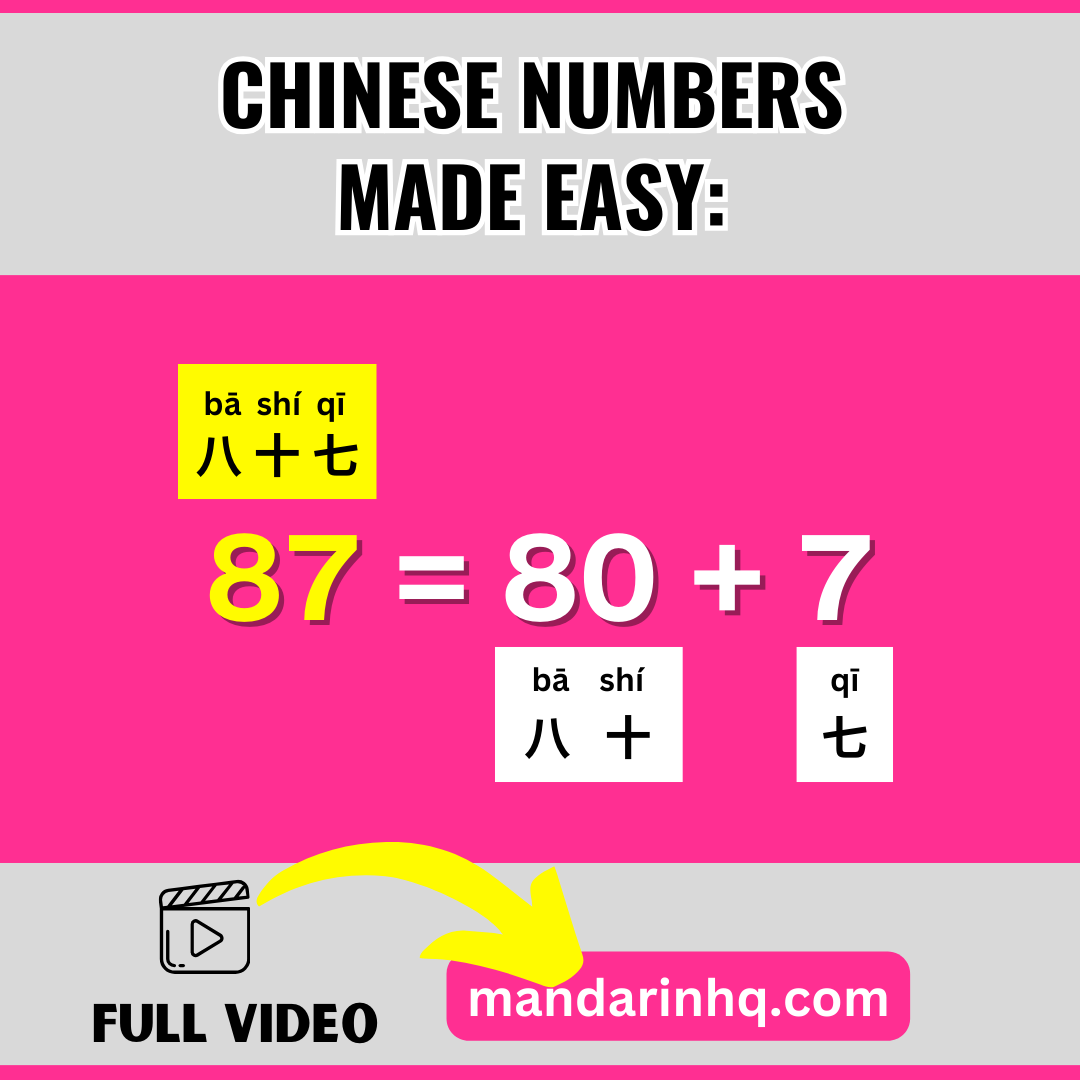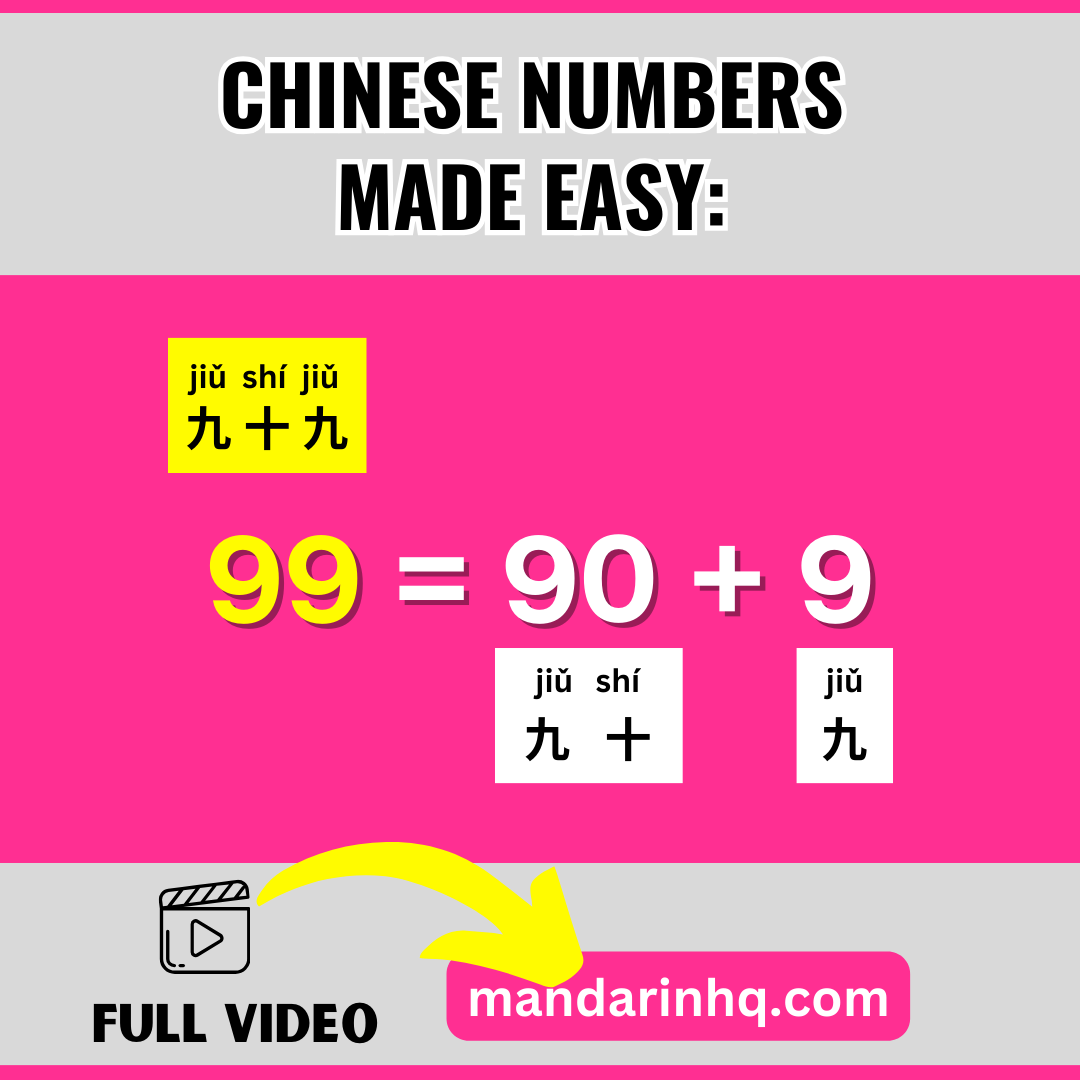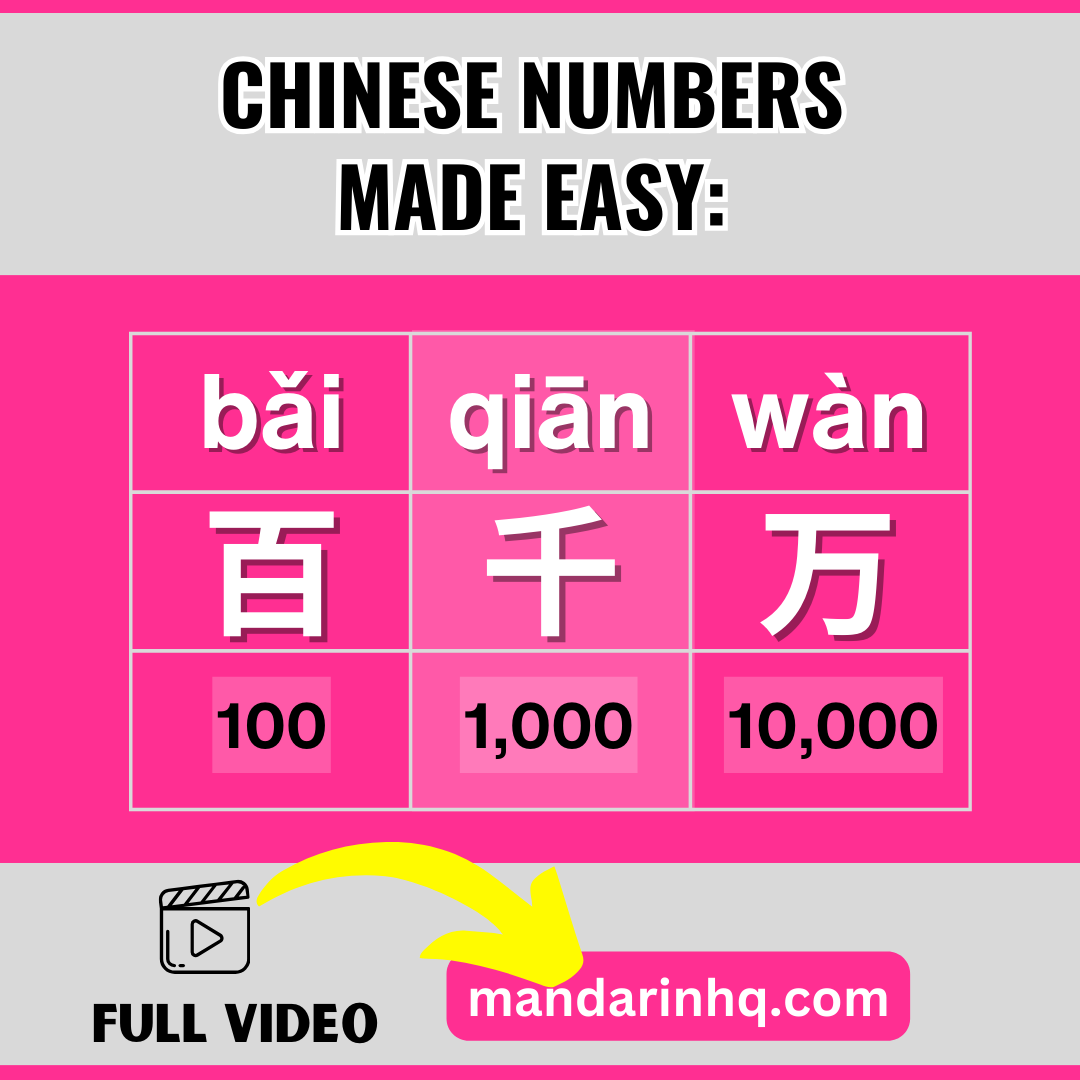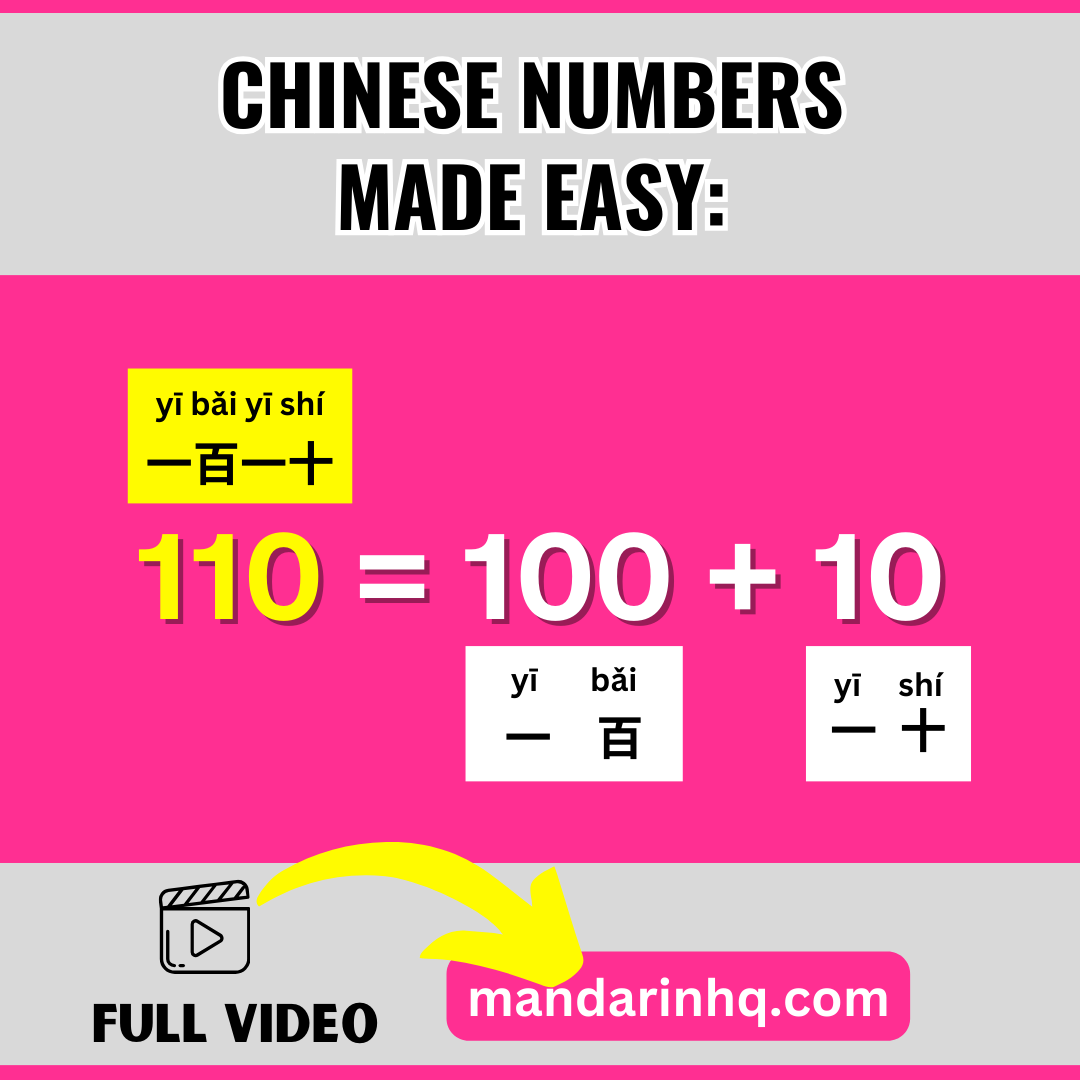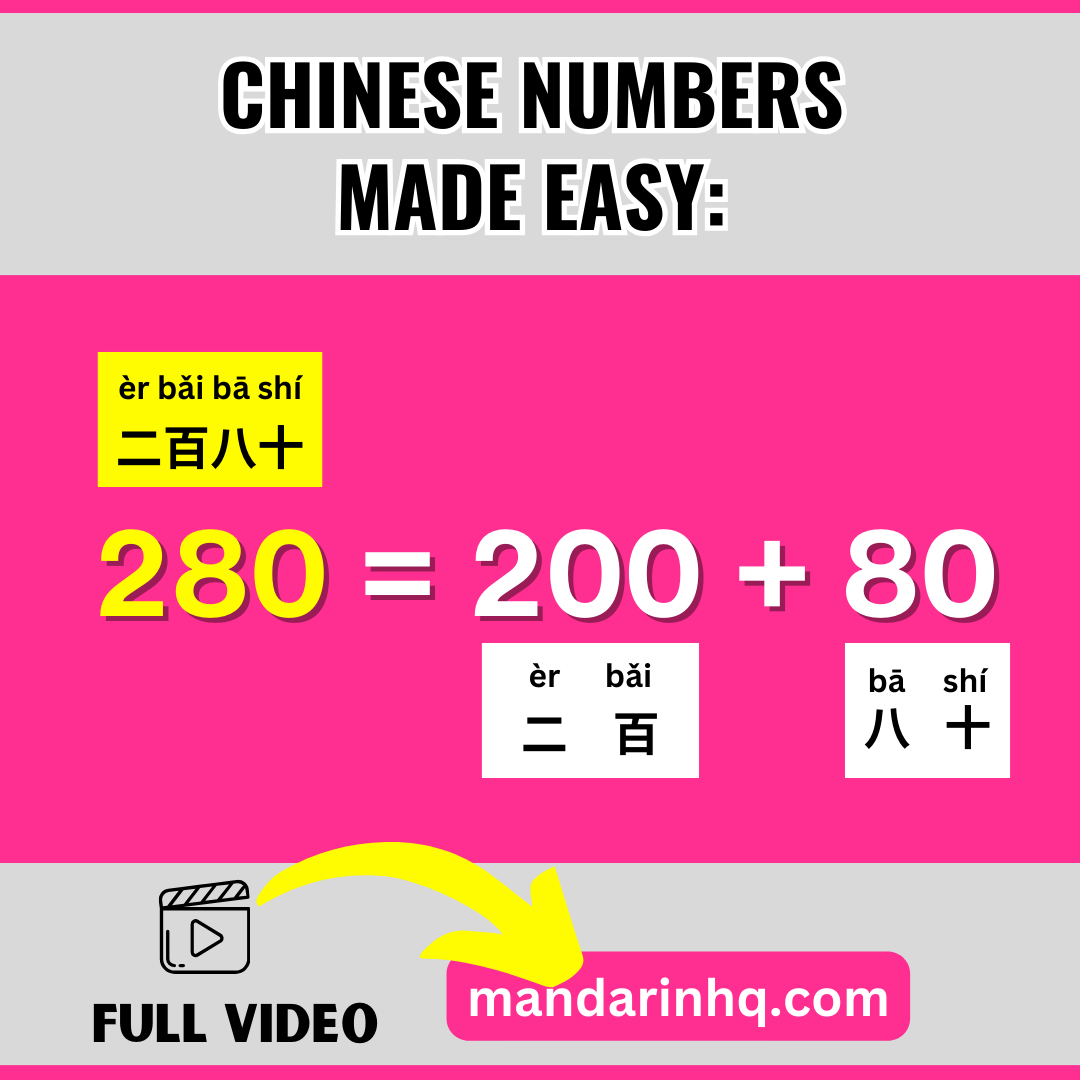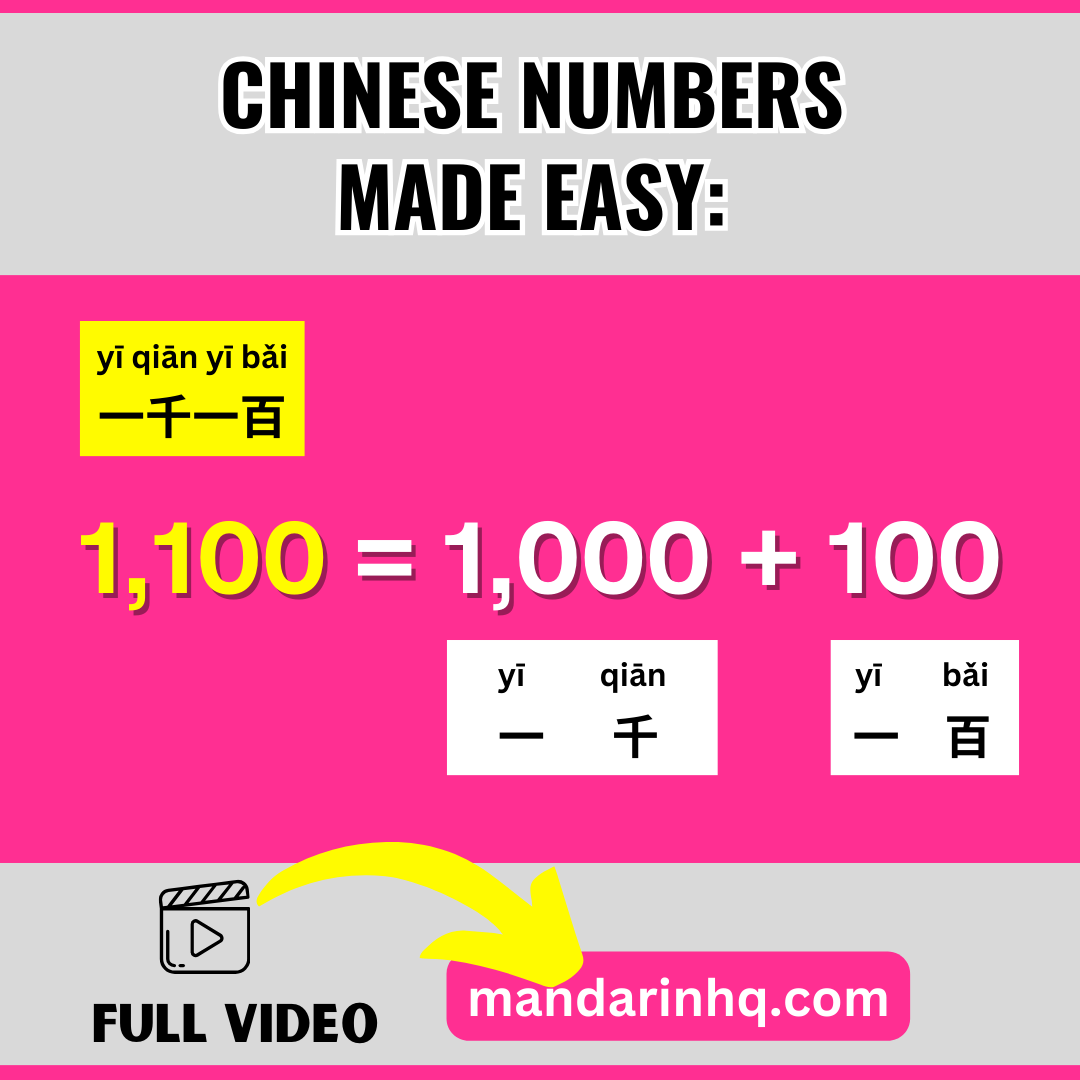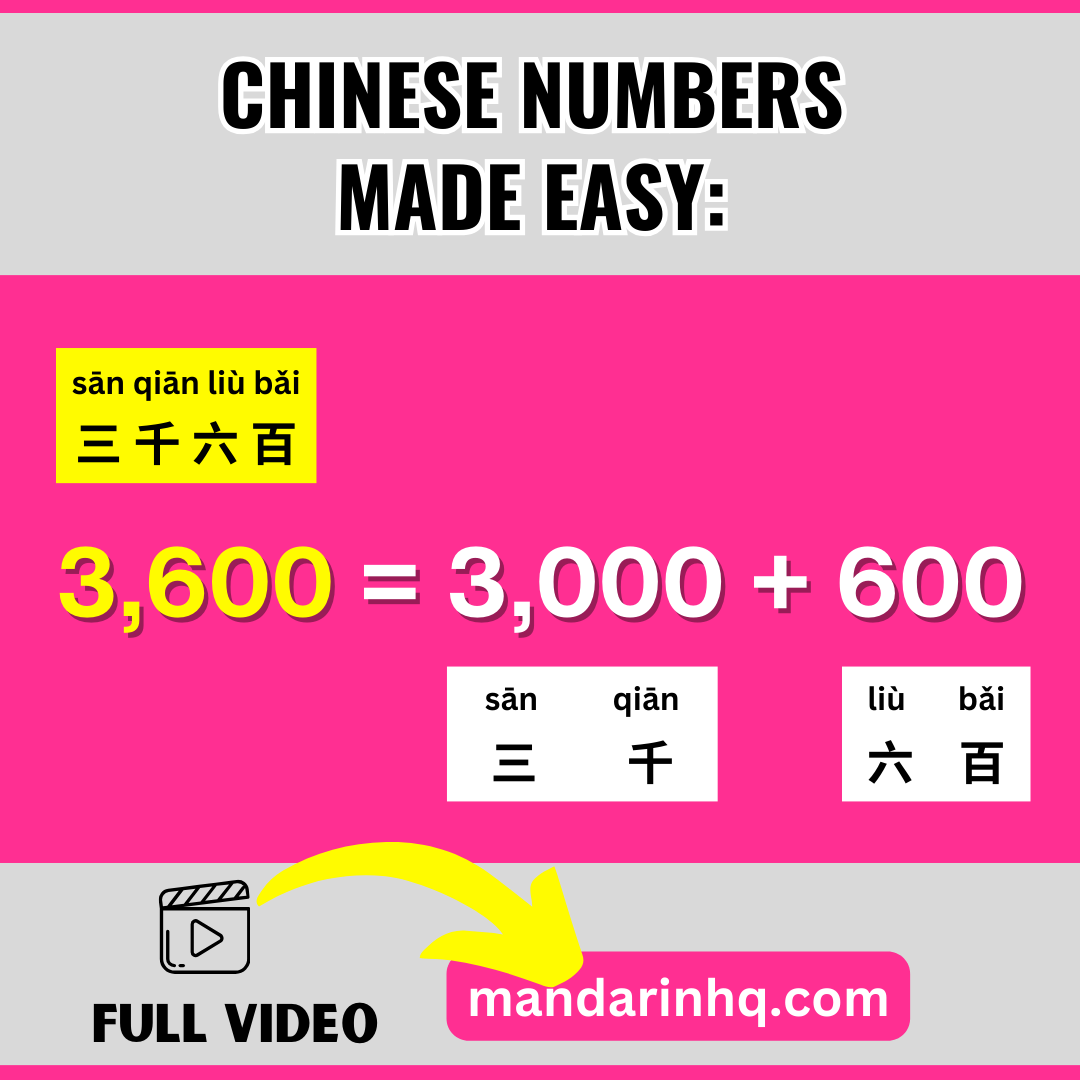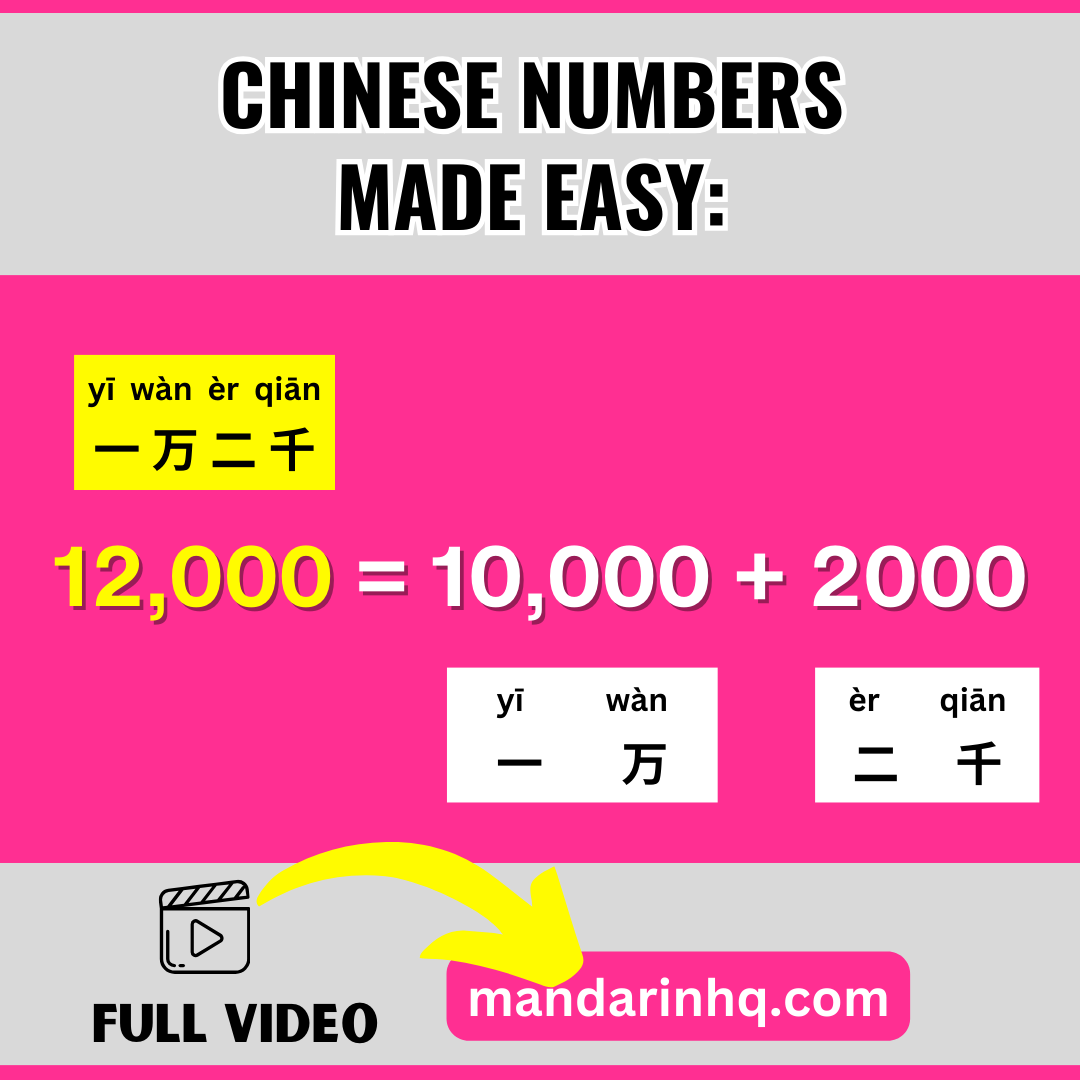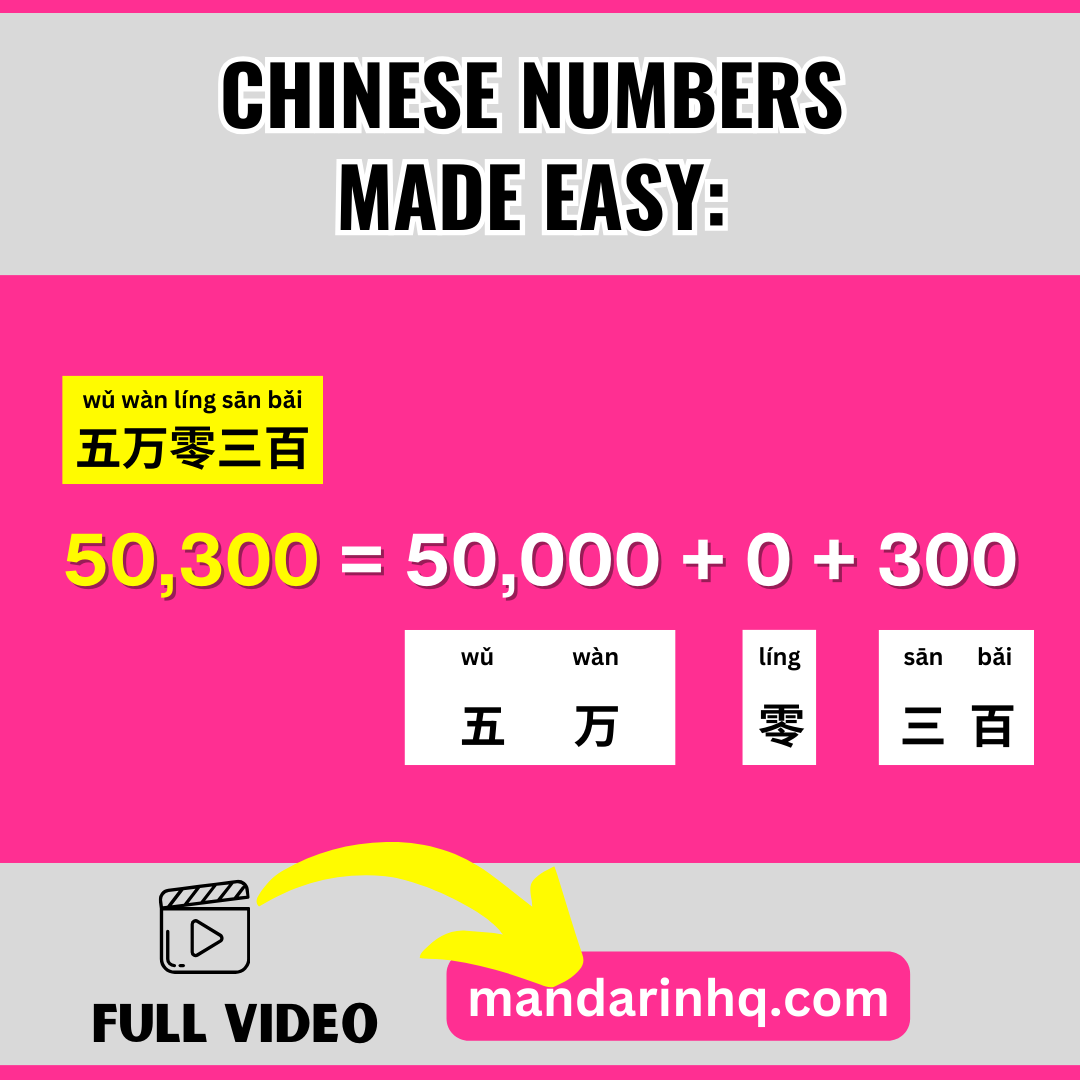One of the unexpected challenges of learning Chinese is mastering numbers.
To help with this, I've created a simple guide that makes it easy to understand and use numbers in Chinese (small & big!).
So if you're having trouble understanding or using numbers in Chinese conversations, this lesson is for you.
Summary Of "Hearing & Understanding numbers in Chinese" From The Video Above
Many learners struggle with numbers in Chinese. So today, we're going to break down the mystery and make them as easy as 一,二,三!
PART 1: THE BASICS
Let's start with the basics. In Chinese, numbers from 1 to 10 have unique names, and the rest are combinations of these. So, if you master the first ten numbers, you're already halfway there!
PART 2: LISTENING PRACTICE
Now, just listen. Which number am I saying?
You'll find the correct answers here in the video.
PART 3: LARGER NUMBERS
Great job! Now that we've got the basics down, let's move on to larger numbers. The way these are formed is logical. So, once you know the system, it’s easy!
Section #1 [NUMBERS 11-99]
Numbers from 11 to 99 in Chinese are formed by combining the numbers 1 to 10.
For example,
11 is 十一 (shí yī), literally “ten one”.
25 is 二十五 (èr shí wǔ), literally “two ten five”.
Let's practice a few more numbers in this range.
35 is 三十五 (sān shí wǔ), literally “three ten five”.
54 is 五十四 (wǔ shí sì), literally “five ten four”.
87 is 八十七 (bā shí qī), literally “eight ten seven”.
99 is 九十九 (jiǔ shí jiǔ), literally “nine ten nine”.
Section #2 [NUMBERS 100, 1000, 10,000]
Now, let's move on to even larger numbers. 100 is 一百 (yī bǎi), 1000 is 一千 (yī qiān) thousand, and 10,000 is 一万 (yī wàn) ten-thousand. Notice how the structure remains consistent. Let's practice forming numbers using these.
110 is 一百一十 (yī bǎi yī shí ), literally “one hundred one ten”
280 is 二百八十 (èr bǎi bā shí), literally “two hundred eight ten”.
1100 is 一千一百 (yī qiān yī bǎi), literally “one thousand one hundred”.
3600 is 三千六百 (sān qiān liù bǎi), literally “three thousand six hundred”.
12,000 is 一万二千 (yī wàn èr qiān), literally “one ten-thousand two thousand”.
50,300 is 五万零三百 (wǔ wàn líng sān bǎi), literally “five ten-thousand zero three hundred”.
Remember, in Chinese, the word for thousand (千) and ten-thousand (万) are used to form . Also, zero (零) is used to specify places without a value.
PART 4: LISTENING PRACTICE
Now that we've learned the structure, let's put it into practice. I'll say a number in English, and you try to say it in Chinese. Ready? Let's go!
You'll find the correct answers here in the video.
Again Remember, the word for thousand (千) and ten-thousand (万) are used to form larger numbers. And zero (零) is used to specify places without a value.
CONCLUSION
And that's it for today's lesson! Remember, the key to mastering numbers in Chinese is practice. So keep at it, and you'll soon be able to use them with ease. If you found this video helpful, don't forget to like, comment, and subscribe for more useful Mandarin lessons.
You might also find these posts interesting:

